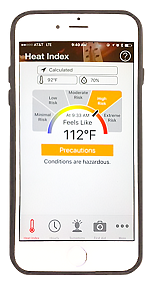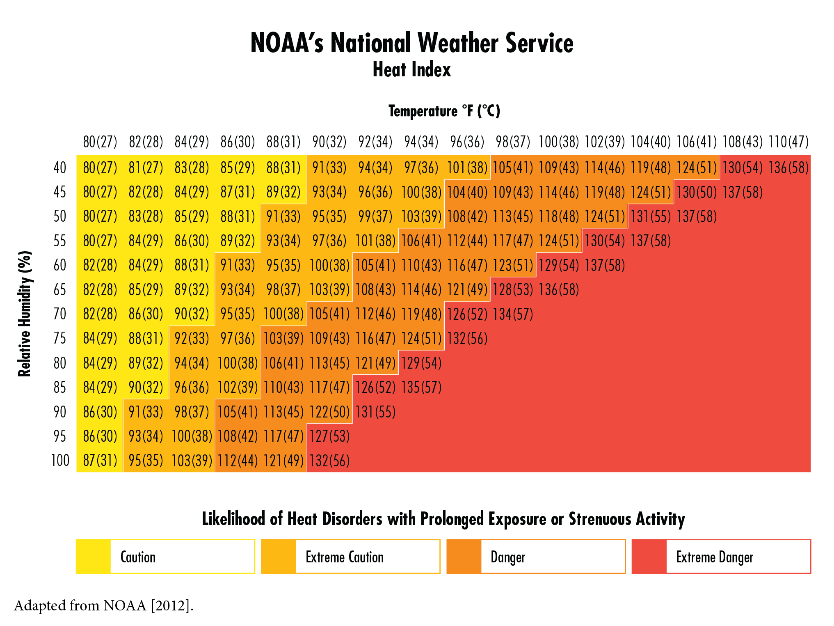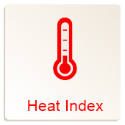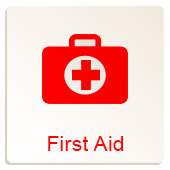Heat Index: When humidity makes it feel hotter
Posted on by
 NIOSH and OSHA recently released the redesigned, co-branded OSHA-NIOSH Heat Safety Tool App. This version replaces the app previously created by OSHA in 2011. The app calculates the heat index at outdoor worksites using the smartphone’s geolocation capabilities to pull current weather conditions from the National Oceanic and Atmospheric Administration (NOAA) satellites. Based on the calculated heat index, users are provided specific sets of recommendations for protections against the heat. Workers and managers can use these recommendations to adjust their work environment. The app recommendations were updated to reflect information found in the NIOSH Criteria for a Recommended Standard: Occupational Exposure to Heat and Hot Environments (published in 2016). Along with updated recommendations, the co-branded app has new features and improved usability. With a basic understanding of the heat index, the app is a useful tool for working safely outdoors.
NIOSH and OSHA recently released the redesigned, co-branded OSHA-NIOSH Heat Safety Tool App. This version replaces the app previously created by OSHA in 2011. The app calculates the heat index at outdoor worksites using the smartphone’s geolocation capabilities to pull current weather conditions from the National Oceanic and Atmospheric Administration (NOAA) satellites. Based on the calculated heat index, users are provided specific sets of recommendations for protections against the heat. Workers and managers can use these recommendations to adjust their work environment. The app recommendations were updated to reflect information found in the NIOSH Criteria for a Recommended Standard: Occupational Exposure to Heat and Hot Environments (published in 2016). Along with updated recommendations, the co-branded app has new features and improved usability. With a basic understanding of the heat index, the app is a useful tool for working safely outdoors.
What is the Heat Index?
The heat index is a measure of how hot it feels when relative humidity is taken into account along with the actual air temperature. It is important to note that since heat index values were devised for shady, light wind conditions, exposure to full sunshine can increase heat index values by up to 15°F.
 The National Weather Service uses the heat index values to issue heat alerts, such as:
The National Weather Service uses the heat index values to issue heat alerts, such as:
- Excessive Heat Outlook – Extended excessive heat (heat index of 105°F-110°F [41°C-43°C]) over the next 3 to 7 days.
- Excessive Heat Watch – Excessive heat may occur within the next 24 to 72 hours.
- Excessive Heat Warning – The heat index will be life threatening in the next 24 hours. Excessive heat is imminent or has a high probability of occurring.
- Excessive Heat Advisory – The heat index may be uncomfortable but not life threatening if precautions are taken.*
When should I use the heat index?
The heat index and wet bulb globe temperature (WBGT) are both used to measure environmental temperature. NIOSH recommends the use of wet bulb globe temperature (WBGT) to determine the Recommended Exposure Limits (RELs) for acclimatized workers and the Recommended Alert Limits (RALs) for unacclimatized workers in hot environments. However, we realize that workers and many small businesses will not have access to the resources necessary to determine WBGT. In these cases using the heat index is a viable alternative. WBGT is determined by measuring dry air temperature, humidity, and radiant energy; and used to calculate a thermal load on the worker. While the literature provides plenty of evidence regarding WBGT’s accuracy and common usage in industrial settings; the simplicity of the heat index makes it a good option for many outdoor work environments (as long as there are no additional radiant heat sources, such as, fires or hot machinery).
Is monitoring the heat index enough to keep workers safe? Use of the heat index (or WBGT) is important, but due to a variety of other factors affecting risk, it cannot be solely relied upon to prevent heat stress among workers. For example, employers should: (1) reduce workplace heat stress by implementing engineering and work practice controls; (2) train workers before hot outdoor work begins; (3) ensure that workers are acclimatized before they work in a hot environment; (4) provide the means for appropriate hydration of workers; (5) ensure and encourage workers to take appropriate rest breaks to cool down and hydrate; and (6) give workers the opportunity to limit exposure to direct sun or other radiant heat sources by providing shaded areas as needed.
The heat index can be used as a screening tool, so that supervisors and workers can more easily recognize when additional preventive options should be implemented. For example, as the heat index increases then more water and rest breaks may become necessary. In addition, if conditions are of extreme risk, then it may be necessary to reschedule non-essential work.
How do I use the OSHA-NIOSH Heat Safety Tool app?
This app provides recommendations to prevent heat-related illnesses and reduce heat stress in outdoor workers based on local weather conditions used to calculate the heat index.
Download the App Download for free at Apple Store and Google Play available in English and Spanish.
 Heat Index When you open the app, if your location services is enabled, the temperature and humidity data will automatically download and the current heat index will be displayed. Beneath the calculated heat index is the associated “Precautions” button for the risk level. By clicking on “Precautions”, you will arrive on a screen with risk level-specific recommendations.
Heat Index When you open the app, if your location services is enabled, the temperature and humidity data will automatically download and the current heat index will be displayed. Beneath the calculated heat index is the associated “Precautions” button for the risk level. By clicking on “Precautions”, you will arrive on a screen with risk level-specific recommendations.
 Hourly Heat Index Forecast If you are interested in planning your work activities for the entire shift around the heat index, there is an hourly feature that will allow you to scroll through and determine the hottest hours of the day along with the corresponding risk level and precautions.
Hourly Heat Index Forecast If you are interested in planning your work activities for the entire shift around the heat index, there is an hourly feature that will allow you to scroll through and determine the hottest hours of the day along with the corresponding risk level and precautions.

 Symptoms and First Aid At the bottom of your app screen you will always have easy access to heat-related illness symptoms and first aid.
Symptoms and First Aid At the bottom of your app screen you will always have easy access to heat-related illness symptoms and first aid.
 More Additional information about the app can be found, along with contact information for both OSHA and NIOSH. The “More Tips” provides information about being prepared for emergencies, training, acclimatization, hydration, monitoring workers for heat-related illness, and breaks. There is also a list of risk factors associated with heat-related illnesses.
More Additional information about the app can be found, along with contact information for both OSHA and NIOSH. The “More Tips” provides information about being prepared for emergencies, training, acclimatization, hydration, monitoring workers for heat-related illness, and breaks. There is also a list of risk factors associated with heat-related illnesses.
For Additional Information
For more information on heat stress and educational products for safety and health professionals, employers, and workers, visit the NIOSH Topic Page on Heat Stress.
Brenda Jacklitsch, MS, is a health scientist with the NIOSH Education and Information Division.
*A 2012 chart from OSHA and related text was removed as it is no longer used by the agency.
Posted on by

